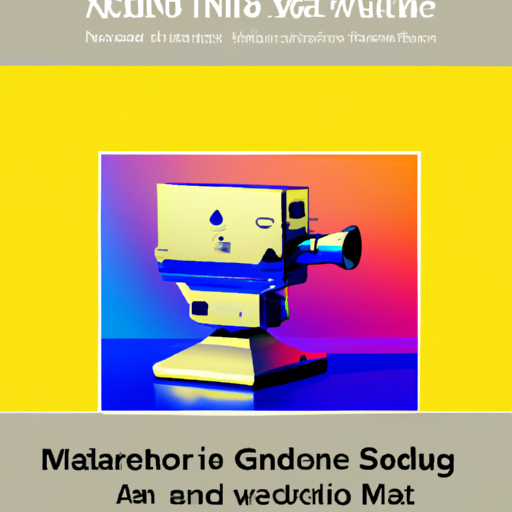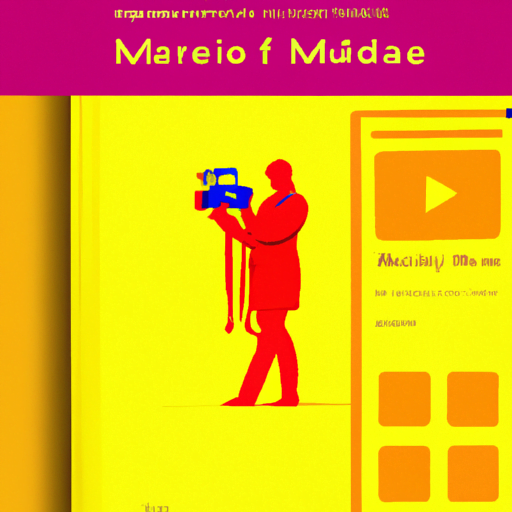
-
Table of Contents
- Interactive eBooks: The Marriage of Design and Technology
- What are Interactive eBooks?
- The Benefits of Interactive eBooks
- Case Studies: Successful Implementation of Interactive eBooks
- 1. Education: “The Elements” by Theodore Gray
- 2. Children’s Literature: “The Monster at the End of This Book” by Sesame Workshop
- 3. Travel Guides: “Lonely Planet’s Best in Travel 2022”
- The Future of Interactive eBooks
- Summary
Interactive eBooks: The Marriage of Design and Technology

In today’s digital age, technology has revolutionized the way we consume information. Traditional print books have given way to their digital counterparts, and with that shift comes the opportunity for innovation. Interactive eBooks, with their marriage of design and technology, have emerged as a powerful tool for engaging readers and enhancing the reading experience. In this article, we will explore the concept of interactive eBooks, their benefits, and how they are transforming the publishing industry.
What are Interactive eBooks?
Interactive eBooks are digital books that go beyond the static text and images found in traditional eBooks. They incorporate multimedia elements, such as videos, audio clips, animations, and interactive features, to create a more immersive and engaging reading experience. These elements can be seamlessly integrated into the narrative, enhancing the story and providing additional context or information.
One example of an interactive eBook is “The Fantastic Flying Books of Mr. Morris Lessmore” by William Joyce. This eBook combines a captivating story with interactive animations and touch-based interactions. Readers can swipe to turn pages, tilt their devices to watch the animations move, and even interact with objects within the story. This level of interactivity not only entertains readers but also encourages them to actively participate in the storytelling process.
The Benefits of Interactive eBooks
Interactive eBooks offer several benefits that make them a compelling choice for both readers and publishers:
- Enhanced Engagement: The interactive elements in eBooks capture readers’ attention and keep them engaged throughout the reading experience. This increased engagement can lead to better comprehension and retention of the content.
- Multi-sensory Experience: By incorporating multimedia elements, interactive eBooks appeal to multiple senses, making the reading experience more immersive and memorable. For example, a history eBook can include videos of historical events, allowing readers to visualize the past.
- Personalization: Interactive eBooks can be customized to suit individual preferences. Readers can adjust font sizes, colors, and backgrounds to enhance readability. They can also choose to enable or disable certain interactive elements based on their preferences.
- Accessibility: Interactive eBooks have the potential to make reading more accessible for individuals with disabilities. Features like text-to-speech functionality and adjustable font sizes can benefit those with visual impairments or reading difficulties.
- Data Collection: Publishers can gather valuable data on reader behavior and preferences through interactive eBooks. This data can help them understand their audience better and tailor future content to meet their needs.
Case Studies: Successful Implementation of Interactive eBooks
Several case studies demonstrate the success of interactive eBooks in various industries:
1. Education: “The Elements” by Theodore Gray
“The Elements” is an interactive eBook that explores the periodic table in a visually stunning and interactive way. It includes 3D models of each element, interactive animations, and detailed information about their properties. This eBook has been widely adopted in classrooms, as it provides a more engaging and interactive learning experience compared to traditional textbooks.
2. Children’s Literature: “The Monster at the End of This Book” by Sesame Workshop
Sesame Workshop transformed the classic children’s book “The Monster at the End of This Book” into an interactive eBook. The eBook features beloved Sesame Street characters, interactive animations, and touch-based interactions. This interactive adaptation has introduced a new generation of children to the joy of reading while incorporating technology seamlessly into the storytelling process.
3. Travel Guides: “Lonely Planet’s Best in Travel 2022”
Lonely Planet’s interactive eBook “Best in Travel 2022” takes travel guides to a whole new level. It includes interactive maps, 360-degree images, and videos that allow readers to virtually explore destinations. This immersive experience helps travelers plan their trips more effectively and provides a taste of what they can expect when they arrive.
The Future of Interactive eBooks
As technology continues to advance, the possibilities for interactive eBooks are endless. Here are some trends that are shaping the future of interactive eBooks:
- Virtual Reality (VR) Integration: VR technology can transport readers to virtual worlds, allowing them to experience stories in a whole new way. Imagine reading a historical fiction eBook and being able to explore the setting in virtual reality.
- Artificial Intelligence (AI) Assistance: AI-powered virtual assistants can provide personalized recommendations based on readers’ preferences and reading habits. They can also offer real-time translations or provide additional information on specific topics within the eBook.
- Collaborative Reading: Interactive eBooks can facilitate collaborative reading experiences, allowing readers to connect with others who are reading the same book. They can share annotations, discuss chapters, and even participate in virtual book clubs.
- Gamification: Gamifying the reading experience can make it more interactive and enjoyable. Interactive eBooks can incorporate game-like elements, such as quizzes, puzzles, and challenges, to engage readers and test their understanding of the content.
Summary
Interactive eBooks have revolutionized the way we read and engage with content. By combining design and technology, these digital books offer enhanced engagement, multi-sensory experiences, personalization, accessibility, and valuable data collection. Successful case studies in education, children’s literature, and travel guides demonstrate the effectiveness of interactive eBooks in various industries. As technology continues to evolve, the future of interactive eBooks holds exciting possibilities, including VR integration, AI assistance, collaborative reading, and gamification. The marriage of design and technology in interactive eBooks has opened up new avenues for storytelling and transformed the publishing industry.
